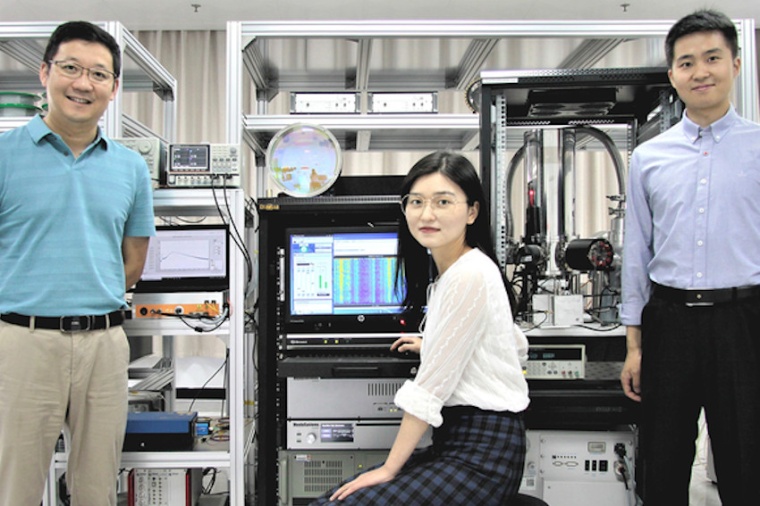Photon-counting for remote spectrum analysis
Improved spectroscopy with an optical comb can detect different gases in the atmosphere simultaneously with ranged-resolved spectra.
Remote sensing of atmospheric gas plays an important role in the fields of greenhouse gas monitoring, toxic, harmful, flammable, explosive gases, and biochemical weapons early warning. With the advent of quantum mechanics and lasers, precise spectral analysis method has developed rapidly in many fundamental domains. Challenges exist in accurate spectrum analysis in free space, which hinder us from understanding the composition of multiple gases and the chemical processes in the atmosphere. Now, a team of scientists, led by Haiyun Xia from School of Earth and Space Science, USTC, China, and School of Atmospheric Physics, NUIST, China, has developed a photon-counting distributed free-space spectroscopy (PDFS).

At present, the carbon emissions peak and carbon neutrality are among of the most concerning topics of discussion worldwide. The researchers used the proposed method to obtain the spectra of carbon dioxide and semi-heavy water (HDO) over 6 kilometers, with a range resolution of 60 meters. “The current state-of-art techniques provide either in-situ or column-integrated spectral information. However, the molecular characteristics vary rapidly in time and space due to chemical reactions and physical transportation in free atmosphere. It would be beneficial to analyze the processes continuously with range-resolved spectra in open areas, especially in inaccessible regions.” said Haiyun Xia, “our method can detect different gases simultaneously with ranged-resolved spectra. It inherits ability from laser remote sensing and spectroscopy.”
First, they used an optical comb to lock the probe laser frequency for precise spectra scanning. Second, they proposed a time-division multiplexing technique to make probe and reference lasers emit alternatively, reducing the influences of aerosol variation, laser power fluctuation, detector instability, and telescope coupling efficiency change. Third, they developed a photon detector with a large active area, high quantum efficiency, and low dark noise to eliminate the need for a high-power laser for long-range detection. The integrated spectra of CO2 and HDO over different ranges and the range-resolved spectra with range resolution of 60 meters were obtained. Semi-heavy water (HDO) natural abundance in the atmosphere is only about 1/3200 of H2O, which is often ignored.
Besides the photon-counting distributed free-space spectroscopy, a coherent Doppler wind lidar (CDWL) developed by the researchers was employed to monitor local meteorological conditions. The researchers measured distributions of the concentrations of CO2 and HDO over 72 hours. In the ranges of 1.2 to 2.5 kilometers, the CO2 concentration shows some lower marks during the daytime, which are caused by the photosynthesis in the parks there. The data show that the local turbulence of atmosphere is strong during the daytime. The diurnal variation of turbulence dominates the gas concentrations near the ground.
“With further development, our method can be updated to measure the distributed spectra over the band of optical communications, so that abundant gases, such as CO, CO2, H2O, HDO, NH3, C2H2 and CH4 can be analyzed by the system. Its application can be extended to long-range warnings of flammable, explosive and toxic substances, and monitoring of industrial pollution. Furthermore, substance evolution and chemical reactions in the free atmosphere can be further investigated.” said Haiyun Xia. (Source: CAS)
Link: School of Earth and Space Science, University of Science and Technology of China, Hefei, China











